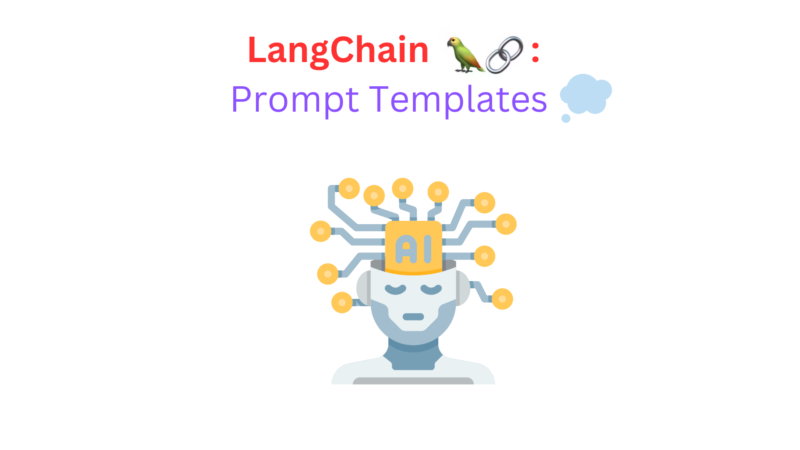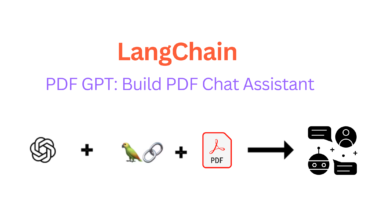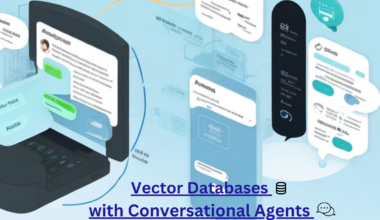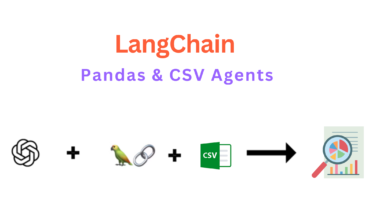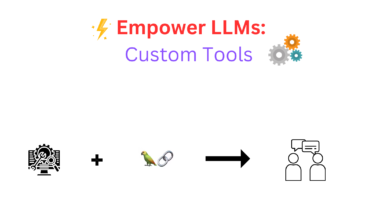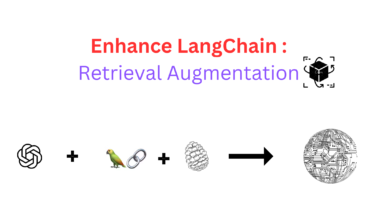Let’s take a deep dive with Prompt Templates with LangChain and how to build prompts properly.
What is LangChain?
LangChain is a powerful Python library that simplifies the process of prompt engineering for language models. The library provides an easy-to-use interface for creating and customizing prompt templates, as well as a variety of tools for fine-tuning and optimizing prompts.
LangChain supports a variety of different language models, including GPT-3.5 and other LLMs, and provides a range of features for customizing prompts, including support for variables and conditional logic.
One of the key advantages of LangChain is that it enables users to create prompts specifically designed to minimize bias in the generated text. This is an important consideration when working with language models, which can sometimes reflect the biases that exist in the training data. Prompt engineers can ensure the accuracy and fairness of the generated text by carefully crafting prompts to avoid or minimize bias.
It also provides support for a range of different prompt types, including classification prompts, generation prompts, question-answer prompts, summarization prompts, and translation prompts. This makes it easy for users to select the right type of prompt for their specific needs, and to fine-tune the prompt to achieve the desired results.
Its core components include:
- Prompt templates: Prompt templates are templates for different types of prompts. Like “chatbot” style templates, ELI5 question-answering, etc
- LLMs: Large language models like GPT-3, BLOOM, etc
- Agents: Agents utilize LLMs to make decisions on the actions to take. They can incorporate tools like web search or calculators into a logical loop of operations.
- Memory: Short-term memory, long-term memory.
In this post, we will look into the magical world of Prompt templates.
What is Prompt Engineering?
Prompt engineering is the process of designing and optimizing prompts for language models to generate high-quality and accurate output. It plays a crucial role in the success of language model applications as it directly impacts the quality and relevance of the generated text.
Language models are capable of generating text based on the input they receive, but without a well-designed prompt, the generated text may not be accurate, relevant, or useful. This is because language models rely heavily on the input they receive to generate output, and the quality of the input directly impacts the quality of the output.
Therefore, prompt engineering is critical in ensuring that the generated text is accurate, relevant, and useful for the intended application. For example, in a chatbot application, you must design the prompt to provide context and guide the conversation toward the intended outcome.
Similarly, in a content creation application, you must design the prompt to capture the intended tone, style, and structure of the generated text.
In addition to improving the accuracy and relevance of the generated text, prompt engineering can also help to minimize bias in the output. Bias can arise in the generated text due to the training data used to train the language model, as well as the prompt used to generate the text. By carefully designing and optimizing prompts, it is possible to minimize bias in the generated text and ensure that it is accurate and fair.
Common Prompt Templates and their applications
Several common prompt templates find widespread use in language model applications, each possessing its own set of applications and use cases. These include classification, generation, question-answer, summarization, and translation prompts.
- Classification Prompts: These prompts classify text into one or more predefined categories and find widespread use in applications such as sentiment analysis, topic classification, and spam filtering. In a classification prompt, the input is a text document or a sentence, and the output is one or more predefined categories.
- Generation Prompts: They generate text based on an input prompt and find widespread use in applications such as chatbots, content creation, and language translation. In a generation prompt, the input is a prompt or a question, and the output is a text document or a sentence.
- Question-answer Prompts: These generate answers to questions based on a given context and are widely used in applications such as chatbots, customer support, and knowledge management. In a question-answer prompt, the input is a question and a context, and the output is an answer to the question based on the given context.
- Summarization Prompts: These prompts are used to summarize text documents or articles into shorter versions. They are widely used in applications such as news summarization, research paper summarization, and document summarization. In a summarization prompt, the input is a text document or an article, and the output is a shorter version of the input.
- Translation Prompts: They are used to translate text from one language to another. They are widely used in applications such as language translation, cross-lingual information retrieval, and cross-lingual sentiment analysis. In a translation prompt, the input is a text document or a sentence in one language, and the output is the same text document or sentence translated into another language.
How LangChain helps in Building Prompts?
LangChain simplifies prompt engineering by providing an intuitive platform with powerful features for creating and customizing prompt templates. Prompt engineering is a crucial aspect of working with language models, as it directly impacts the quality and relevance of the generated text. LangChain offers several core components to streamline the prompt engineering process.
One of the key components of LangChain is prompt templates. These templates are pre-defined structures for different types of prompts, such as chatbot-style templates, ELI5 (Explain Like I’m 5) question-answering templates, and more. Prompt templates serve as a starting point for creating prompts and provide a consistent structure that helps guide the language model’s responses.
It also integrates various large language models (LLMs), including GPT-3.5 and others. These LLMs serve as the underlying engines that generate the text based on the provided prompts. By leveraging powerful LLMs, LangChain ensures that the generated text is accurate and contextually relevant.
Agents are another important component of LangChain. Informed decisions are made by agents using LLMs, often enhanced by tools such as web search or calculators, based on the responses to given prompts. This logical loop of operations helps improve the overall performance of prompt-based applications.
LangChain includes memory components, such as short-term memory and long-term memory. These memory features enable the language model to retain and recall information, making it easier to maintain context and generate coherent responses.
To illustrate the importance of proper prompt engineering, let’s consider an example using LangChain’s prompt templates for generating a response about photosynthesis. We can compare a proper prompt template with an improper prompt template and observe the differences in the generated output.
Building Prompts with LangChain
Look at the code below:
import openai
from langchain import PromptTemplate
from langchain.llms import OpenAI
openai = OpenAI(
openai_api_key=”YOUR OPEN AI API KEY”,
model_name="text-davinci-003",
)
proper_template = """
You are required to answer the following question in form of bullet points(5 points minimum) based on the provided context. The answer should be in your own words and should not exceed 500 words. The answer should be in English.:
{context}
now based on above context answer the following question:
{question}
Answer:
"""
less_structured_prompt = """
Answer the the following question based on the provided context.
{context}
Question: {question}
Answer:
"""
proper_prompt_template = PromptTemplate(
input_variables=["context","question"],
template=proper_template
)
less_structured_prompt_template = PromptTemplate(
input_variables=["context","question"],
template=less_structured_prompt
)
# get wikipedia article on the topic of "machine learning"
import wikipediaapi
wiki_wiki = wikipediaapi.Wikipedia('en')
page_py = wiki_wiki.page('Photosyntesis')
context = page_py.summary
question = "What is photosynthesis?"
better_prompt = proper_prompt_template.format(context=context,question=question)
not_informative_prompt = less_structured_prompt_template.format(context=context,question=question)
print("Proper prompt:\n",openai(better_prompt),"\n")
print("Improper prompt: \n",openai(not_informative_prompt),"\n")Output:
Proper prompt:
• Photosynthesis is a process used by plants and other organisms to convert light energy into chemical energy that, through cellular respiration, can later be released to fuel the organism's activities.
• This energy is stored in carbohydrate molecules, such as sugars and starches, which are synthesized from carbon dioxide and water.
• Most plants, algae, and cyanobacteria perform photosynthesis; such organisms are called photoautotrophs.
• Photosynthesis is largely responsible for producing and maintaining the oxygen content of the Earth's atmosphere, and supplies most of the energy necessary for life on Earth.
• The process begins when energy from light is absorbed by proteins called reaction centers that contain green chlorophyll (and other colored) pigments/chromophores.
• In light-dependent reactions, some energy is used to strip electrons from suitable substances, such as water, producing oxygen gas.
• The hydrogen freed by the splitting of water is used in the creation of two further compounds that serve as short-term stores of energy, enabling its transfer to drive other reactions: these compounds are reduced nicotinamide adenine dinucleotide phosphate (NADPH) and adenosine triphosphate (ATP), the "energy currency" of
Improper prompt:
Photosynthesis is a process used by plants and other organisms to convert light energy into chemical energy that, through cellular respiration, can later be released to fuel the organism's activities. It involves the absorption of light energy by proteins called reaction centers that contain green chlorophyll (and other colored) pigments/chromophores. The chemical energy is then stored in carbohydrate molecules, such as sugars and starches, which are synthesized from carbon dioxide and water. Photosynthesis is largely responsible for producing and maintaining the oxygen content of the Earth's atmosphere, and supplies most of the energy necessary for life on Earth. The output demonstrates the difference between using a proper prompt template and an improper prompt template. In this example, the proper prompt template follows a specific structure that provides clear instructions to the language model. It includes a request for a bullet-pointed answer in the specified word limit and language.
The proper prompt output provides a detailed and structured response that answers the question about photosynthesis in bullet points. It includes information about the process, its significance, and the related compounds involved. The generated text is accurate and aligns with the desired format specified in the prompt template.
On the other hand, the improper prompt template lacks specific instructions and structure. It only presents some information about photosynthesis without a clear request for a specific format or organization. As a result, the generated text lacks the desired structure and completeness. It provides a brief overview of photosynthesis without addressing the specific question in the prompt.
This example illustrates the importance of using well-designed prompt templates that guide the language model to generate accurate and relevant responses in the desired format.
Takeaways
Prompt engineering, along with the use of platforms like LangChain, can significantly improve the output quality of language models and ensure they meet the intended requirements of various applications.
